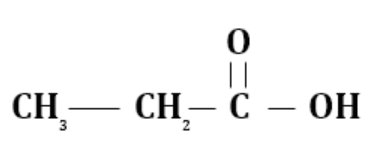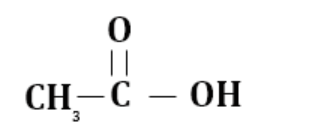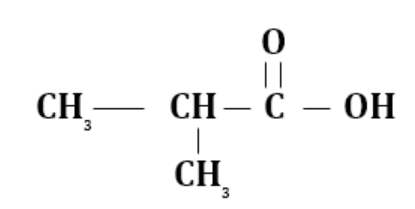
Which of the following will not undergo H V Z reaction?
a. Propanoic acid
b. Ethanoic acid
c. 2-methyl propanoic acid
d. 2,2-dimethyl propanoic acid
Answer
510k+ views
Hint: Hell- Volhard- Zelinsky reaction is a type of odd substitution reaction in which carboxylic acid which contains $\alpha $hydrogen gets converted to $\alpha $ halo carboxylic acid.
Complete step by step answer:
First of all, let us understand what the Hell- Volhard- Zelinsky [H V Z] reaction?
Hell- Volhard- Zelinsky [H V Z] reaction is also known as H V Z reaction. It is a type of substitution reaction in which carboxylic acids are converted to $\alpha $halo carboxylic acid. The reaction is initiated by the addition of phosphorus tribromide [Catalytic amount] and the further addition of one molar equivalent of di-atomic bromine.
Since, it is clear that $\alpha $hydrogen present in carboxylic acid is substituted by a halo group so the presence of $\alpha $hydrogen in the corresponding carboxylic acid is very important.
Let us draw the structure of four carboxylic acids given to us in the question.
(a) Propanoic acid

$(2 \propto \, - H)$
(b) Ethanoic acid

$(3 \propto \, - H)$
(c) 2-methyl propanoic acid

$(1 \propto \,H)$
(d) 2,2-dimethyl propanoic acid

$(no \propto \, - H)$
Thus, 2,2-dimethyl propanoic acid does not contain any $\alpha $hydrogen. Hence it will not participate in Hell- Volhard- Zelinsky [H V Z] reaction.
Option (d) is the correct answer.
Note:
Students should note that the H V Z reaction generally accomplishes bromination but fails in case of fluorination and iodination of carboxylic acid. The following reaction is not conducted at extremely high temperature, as there may be an elimination of hydrogen halide from the product thereby resulting in the formation of beta unsaturated carboxylic acid.
Complete step by step answer:
First of all, let us understand what the Hell- Volhard- Zelinsky [H V Z] reaction?
Hell- Volhard- Zelinsky [H V Z] reaction is also known as H V Z reaction. It is a type of substitution reaction in which carboxylic acids are converted to $\alpha $halo carboxylic acid. The reaction is initiated by the addition of phosphorus tribromide [Catalytic amount] and the further addition of one molar equivalent of di-atomic bromine.
Since, it is clear that $\alpha $hydrogen present in carboxylic acid is substituted by a halo group so the presence of $\alpha $hydrogen in the corresponding carboxylic acid is very important.
Let us draw the structure of four carboxylic acids given to us in the question.
(a) Propanoic acid

$(2 \propto \, - H)$
(b) Ethanoic acid

$(3 \propto \, - H)$
(c) 2-methyl propanoic acid

$(1 \propto \,H)$
(d) 2,2-dimethyl propanoic acid

$(no \propto \, - H)$
Thus, 2,2-dimethyl propanoic acid does not contain any $\alpha $hydrogen. Hence it will not participate in Hell- Volhard- Zelinsky [H V Z] reaction.
Option (d) is the correct answer.
Note:
Students should note that the H V Z reaction generally accomplishes bromination but fails in case of fluorination and iodination of carboxylic acid. The following reaction is not conducted at extremely high temperature, as there may be an elimination of hydrogen halide from the product thereby resulting in the formation of beta unsaturated carboxylic acid.
Recently Updated Pages
Difference Between Alcohol and Phenol: Structure, Tests & Uses

Classification of Drugs in Chemistry: Types, Examples & Exam Guide

Class 12 Chemistry Mock Test Series for JEE Main – Free Online Practice

Is PPh3 a strong ligand class 12 chemistry JEE_Main

Full name of DDT is A 111trichloro22bispchlorophenyl class 12 chemistry JEE_Main

Sodium acetate on heating with soda lime produce A class 12 chemistry JEE_Main

Trending doubts
JEE Main 2026: Application Form Open, Exam Dates, Syllabus, Eligibility & Question Papers

Derivation of Equation of Trajectory Explained for Students

Hybridisation in Chemistry – Concept, Types & Applications

Understanding the Angle of Deviation in a Prism

How to Convert a Galvanometer into an Ammeter or Voltmeter

Degree of Dissociation: Meaning, Formula, Calculation & Uses

Other Pages
Solutions Class 12 Chemistry Chapter 1 CBSE Notes - 2025-26

NCERT Solutions For Class 12 Chemistry Chapter 1 Solutions - 2025-26

The D and F Block Elements Class 12 Chemistry Chapter 4 CBSE Notes - 2025-26

NCERT Solutions for Class 12 Chemistry Chapter Chapter 7 Alcohol Phenol and Ether

NCERT Solutions ForClass 12 Chemistry Chapter Chapter 8 Aldehydes Ketones And Carboxylic Acids

JEE Advanced Marks vs Ranks 2025: Understanding Category-wise Qualifying Marks and Previous Year Cut-offs




